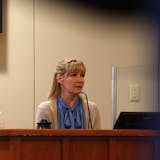Minnesota's jobless rate last month vaulted to its highest level since 1983 — 8.1% — but officials said the figure lowballed the damage to the state workforce.
A different indicator, the number of people filing unemployment claims, shows more than 20% of the state's workers have been hurt. And in preparing the monthly employment snapshot released Thursday, economists at the Department of Employment and Economic Development (DEED) tried to understand why the unemployment rate was so far from that figure.
They settled on timing and methodology as the likely reasons for the disparity.
The unemployment rate is determined from a survey of about 900 Minnesota households conducted in the middle of the month by the U.S. Bureau of Labor Statistics. That's a small sample, and it was taken when the number of people leaving work was still rising.
"It's not very good at picking up quick changes and we've never had a change this quick before," said Oriane Casale, labor market analyst at DEED.
In February and March, the state's unemployment rate was 3.1%, ending an 18-month stretch in which the rate hovered near its all-time low.
A separate survey conducted by DEED last month of Minnesota employers produced data that more closely aligned with the number of unemployment claims. Those claims have nearly reached 700,000 since March 16, the day the state-ordered closure of public gathering places and businesses such as restaurants began.
The DEED survey of employers found 332,000 fewer Minnesotans working in April than in March, an 11% drop.



